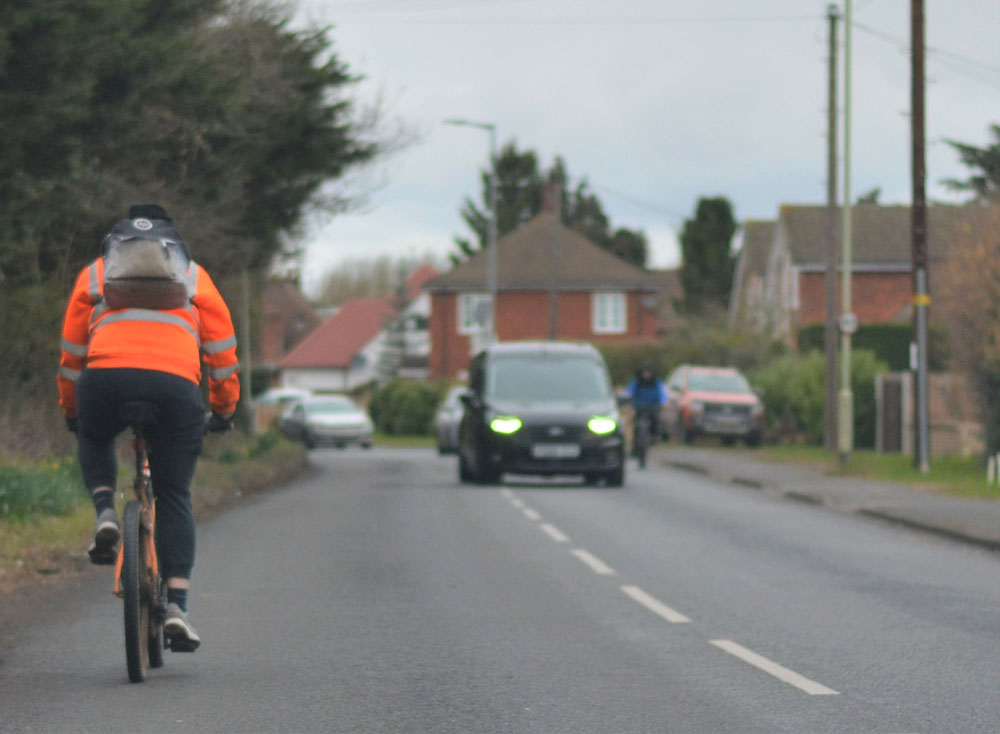
The number of people killed while cycling, per billion miles, on Great Britain’s roads fell by nearly a quarter compared with pre-pandemic years, according to new analysis by Cycling UK.
The latest DfT statistics on road traffic estimates for England, Wales and Scotland – published earlier this month – show the distance travelled by people cycling in 2022 totalled 3.9 billion miles.
This is an increase of 12% from an average of 3.5 billion miles per year for 2015-19.
Meanwhile, provisional road casualty figures published in May show there were 85 fatalities for pedal cyclists in 2022, the lowest number of fatalities since 1993.
This represents a 15% reduction from an average of 100 fatalities per year between the years of 2015 and 2019, the closest comparable years after the pandemic.
Cycling UK says this is significant as it allows it to calculate the rate of people killed while cycling per billion miles travelled – ‘the best way to see if cycling on the roads is growing safer’.
In 2022, 22 people were killed while cycling per billion miles cycled compared to an average of 29 between 2015-19, a 24% reduction.
The cycling charity believes a number of road safety measures, including liveable neighbourhoods and updates to the Highway Code, introduced in 2021 and 2022, may be part of the reason for the significant decline.
However, it says more Government action and investment is needed to ensure this marks the beginning of a longer-term trend in road casualties for people cycling and doesn’t become a statistical anomaly.
Sarah Mitchell, Cycling UK’s chief executive, said: “These figures prove the tragic death toll on our roads isn’t inevitable. They show the Government could save hundreds of lives and prevent thousands of devastating injuries by taking more action to reduce road danger.
“Proving cause and effect is always difficult, but over the last two years a number of measures have been introduced to make roads safer, such as an updated Highway Code, wider roll out of 20mph zones, and interventions to reduce through traffic in residential areas.
“It is likely a combination of these contributed to last year’s reduction in cyclist deaths.”
RE General traffic levels.
The link in the article shows a 4% decrease in traffic in 2022 relative to 2019 but that just puts it back to about 2016 levels.
Unlikely to be proportional. Anecdotally the low traffic levels during pandemic led to dangerous speeding. Log-jammed traffic is harmless from a collision POV.
Paul Luton, Teddington
+1
Caution is needed with this data. Given the vast majority of cyclist casualties are linked to motor vehicles then the annual cumulative mileage of motorised vehicles is vital information. If this shows a drop from 2019 to 2022 then the cycling casualty rate data may not be as impressive as people think.
Peter Whitfield, Liverpool
+3
Does this mean fewer collisons involving cyclists altogether per se – which would be significant good news – or simply fewer deaths from more or less the same number of collisions involving cyclists in which case the reduction in deaths is down to luck and circumstance and not necessarily to do with the Highway Code and the other changes mentioned. The actual number of collisions o nour roads is a better indicator of road user behaviour than the consequences of those collisions.
Hugh Jones, Cheshire west
0